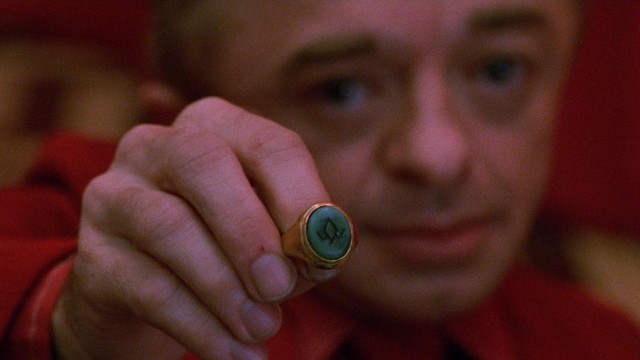6 months ago, CBS released a new blu-ray box set of Twin Peaks, subtitled The Whole Mystery. The new box set featured the series remastered for high definition, similar to the Gold Box Edition. It also featured two extremely desirable goodies: a high definition edition of Fire Walk With Me and a 90 minute sequence of extended and deleted scenes titled The Missing Pieces. The full details of each scene in The Missing Pieces are lovingly detailed elsewhere, but that isn’t the purpose of this article. Instead, I want to talk about what each section of Fire Walk With Me does, and how The Missing Pieces would have changed the film.
Everybody knows that Fire Walk With Me has two main ssections: the pilot for an alternate world season of Twin Peaks about Teresa Banks set in Deer Meadow, Oregon, and the final seven days of Laura Palmer. These two sections are split by a mysterious invasion of David Bowie talking about a Lodge meeting above a convenience store and not talking about Judy. The scenes included in The Missing Pieces span all three portions of the movie, as well as an added denouement for fans of the show.
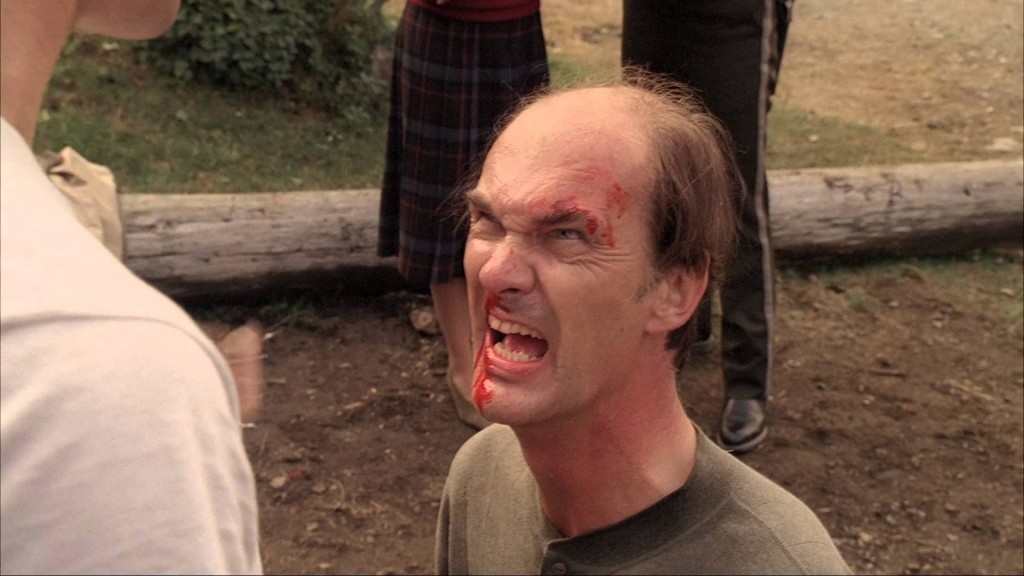 The Investigation of Teresa Banks
The Investigation of Teresa Banks
Fire Walk With Me opens with a very long section about Teresa Banks, the “first” girl murdered by BOB, or, at least, the BOB that inhabits Leland’s body. This section is set in Deer Meadow, OR, where Teresa Banks has just been murdered and set to float down a river. Teresa had just moved to Deer Meadow the previous month and scored a job at Hap’s Diner.
This first section of Fire Walk With Me is all about highlighting the differences between Teresa Banks and Laura Palmer. Through the series, we learned that Laura Palmer and Teresa Banks had previously worked together as prostitutes, had pictures taken for Flesh World, and had been murdered in similar fashions. They both had been killed, dumped in a river, and had a letter placed under their ring fingernail. It was all too obvious that BOB had killed both Teresa and Laura, but little was learned about laura.
Through this first section, Lynch is highlighting that Teresa, while similar to Laura’s dark side on the surface, was part of a broken system. Where Laura had a solid home and tight-knit family (on the surface), Teresa was a transient with no connection to a family. Where Laura lived in a suburban 2-story house, Teresa moved to a run down trailer park after having resided in the Blue Diamond Motel. Laura maintained a surface appearance of the homecoming queen, but Teresa’s co-worker waitress knew Teresa was trouble and had a coke habit after only a month.
These differences extended to the city of Deer Meadow. Where the people of Twin Peaks were a lovingly quirky sort forming tight connections with the world around them, the people of Deer Meadow were judgmental, combative, and distrusting of everybody. Twin Peak’s law enforcement were trying to combat the drug action running underneath their surface, but Deer Meadow’s law enforcement were the drug dealers. The waitress and owner of the Double R Diner are young, pretty, and always happy to serve you; the waitress of Deer Meadow’s Hap’s Diner caustically comments, “Do you want to hear about our specials? We don’t have any.”
This section of Fire Walk With Me isn’t just to be a rotten alt world Twin Peaks, but to reiterate the show’s theme in reverse. Twin Peaks suggested there was a seedy underbelly to all the good suburban homes, but Fire Walk With Me reiterates that these stories happen regardless of financial status. Looking at the film as a whole, Lynch is outright stating that shit runs both directions. Later in the movie, Bobby shoots the Deer Meadow deputy in a drug deal gone wrong. However, this section on its own really narrows on Teresa Banks as a person. Once we meet the body of Teresa Banks, every scene focuses on building Teresa Banks as a person and uncovering her place in this rotting community. David Lynch cares about Teresa Banks as an individual and as a parallel to Laura Palmer.
The first few scenes of The Missing Pieces shifts the focus away from Teresa Banks and toward the detectives and the town. Most of the scenes preceding the new edit of David Bowie’s sequence are directly about the detectives and not about Teresa Banks. These missing scenes further detail Sam Stanley’s ecstatic overzealous attitude, and Desmond Cooper’s antagonistic position with the local law. If the final movie is about setting up Teresa Banks as an alt world Laura Palmer, then these scenes center on the town itself. This becomes a running theme of The Missing Pieces, as Lynch’s alternate goal was to indict the two towns as much as it was to document the horror of Laura Palmer.
Strangely, Agent Cooper has an introductory sequence in here, chipperly talking to an off-screen Diane who doesn’t talk back. It’s just a stupid piece of fan service that adds nothing to Agent Cooper, Diane, nor the story. Really, this is the Twin Peaks equivalent to Chewbacca’s presence in Star Wars episode 3 and we’re all thankful it was cut (unlike Chewbacca).
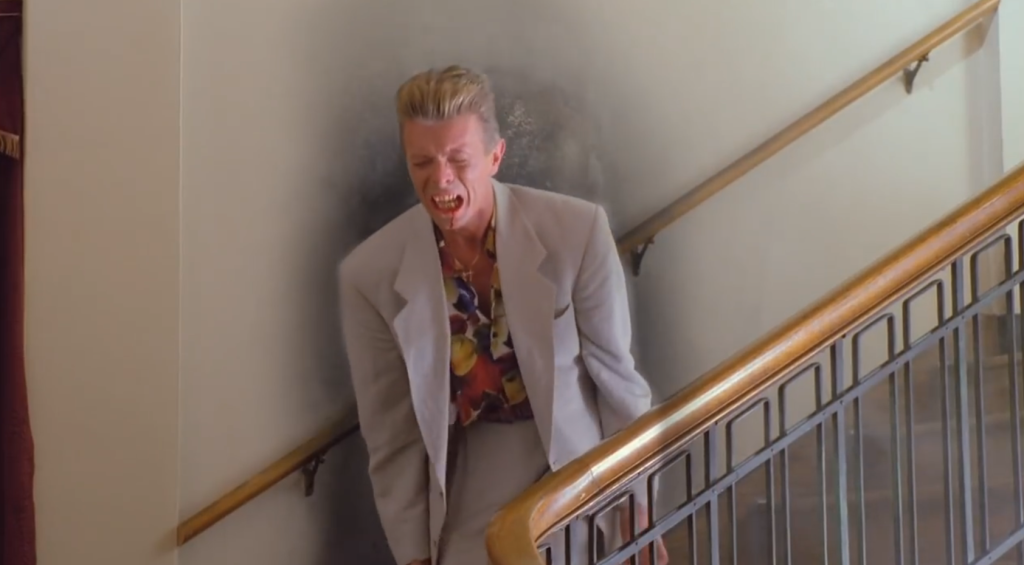 The Mystery of Philip Jeffries
The Mystery of Philip Jeffries
It has been said that if Fire Walk With Me had been successful, Lynch and Frost might have continued with another season or movie of Twin Peaks. Without that extra season or sequel, the appearance of Philip Jeffries is one of the strangest moments in Fire Walk With Me. A previously unknown character comes into the Gordon Cole’s office, talks about a meeting above a convenience store, and disappears into thin air. Those who talk about the former Season 3 of Twin Peaks claim that Philip Jeffries would have been a part of a new mythology involving Josie and Windom Earle.
As it exists, this mini sequence, which splits the movie between Desmond Chester and Dale Cooler as well as between Teresa Banks and Laura Palmer, has been edited to be concise and multi-layered. The discussion of the convenience store meeting is disruptively illustrated with scenes from the actual meeting. The sequence passes by like a quick and intense fireball. With the level of condensation, it wouldn’t be a stretch to suggest that Lynch may have wanted to take the scene out of the movie. But, there’s several important bits of information in the scene that couldn’t entirely be dispensed with; the most obvious is that Chester Desmond is missing. After Philip Jeffries vanishes, Gordon shouts out “HE’S GONE AND CHESTER DESMOND IS MISSING.”
More than that, the lodge holds clues to the running symbols of the movie. This lodge meeting ties the inhabitants of the lodge to disruptions of electricity. If BOB and The Man From Another Place are in competition for souls, then this scene ties Mrs. Desmond and her grandson to TMFAP by tying a Jumping Man, wearing a similar mask to the grandson, to BOB. The Man From Another Planet (aka Mike, Gerard, and The Arm) also informs us he uses a ring to tie himself to Bob’s victims, presumably as a way of saving their souls.
In the span of a few minutes, this scene is a Lynchian information dump that couldn’t be undone. Lynch couldn’t extract Philip Jeffries out of the movie without removing key bits of information. His solution in the final film is to crumple the scenes together to make sure the information gets processed without disrupting the story too much. He also added Dale Cooper’s dream and the faulty video camera to shift focus from Philip Jeffries delivering the story to Dale Cooper receiving the information.
The Missing Pieces uncrumples Philip Jeffries’ scenes. Philip Jeffries walks into a hotel in Buenos Aires where he receives a note from a young lady. He walks out of the lobby, and then we’re shown the convenience store meeting in its entirety. After the meeting, Jeffries walks out of the elevator into Gordon’s office, which plays out straight this time. The electrical equipment malfunctions, and he disappears to be zapped back to the Buenos Aires hotel. Although this makes the information easier to digest, the new structure all but excludes Dale Cooper (who would have been introduced in the afore-mentioned Diane sequence). This version isn’t about Dale’s dream, but about Jeffries’ dream.
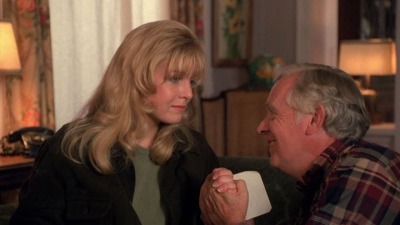 The Final Days of Laura Palmer
The Final Days of Laura Palmer
The two sections above take up about 40 minutes of Fire Walk With Me, leaving the next 100 minutes to relate the last days of Laura Palmer.
The humanity of Laura Palmer is an abstraction of the TV series, Twin Peaks. The pure horror and tragedy is mentioned. We know that incestuous rape is horrific on an intellectual level, as is being killed by your father, but the bread crumbs of clues never add up to a full human being. The only time we hear Laura talk is through a tape recording or a parrot. The only time we see Laura is through a VHS tape in which Laura is sidelined to focus on James’ motorcycle. Throughout the series, Laura Palmer’s death is buried under other people’s horrific murders (like Maddy), the genial quirkiness of the town, and the police procedural. We see how the one death can impact a whole town, but we don’t see Laura Palmer’s place in the town except through her absence.
If the investigation of Laura Palmer’s death doesn’t convey the horror, then Lynch wanted to hammer home the horrific tragedy of the scene. Laura begins Fire Walk With Me as a girl already forced into a somewhat damaged adulthood. She snorts cocaine in the high school bathroom and has sex with James behind the school. However, the full force of breaking her soul takes place in the span of a week.
Laura had been raped by her father since she was 12, but she had created a separate identity for her father in order to deal with the damage. She turned his violent, sexually abusive, side into BOB, an otherworldly evil figure, as a way to cope with the wreckage. As we grow into adulthood, we leave behind childhood fantasies, and Laura has to deal with the realization that Bob is actually her father. This realization tears her apart, leaving her with the decision to remain good or be possessed by the darkness left in her. She toys with the darkness when Donna makes a foray into Laura’s darker world, but ultimately Laura chooses a salvation, of sorts.
Everything in this section of Fire Walk With Me is aimed at Laura. This is Laura’s story, not an episode of Twin Peaks. The final product of Fire Walk With Me delves deeply into Laura’s soul to deal with her personal demons.
All of the deleted and extended scenes in The Missing Pieces shift the focus or tone of the movie. The first couple scenes of this section of The Missing Pieces are emotionally faulty. Laura and her mother had been living under the oppression of Leland and Bob for years. Yet, two of the deleted scenes show a quirky, mildly tense, but otherwise joyous family. Sarah Palmer walks in with groceries, smoking a cigarette, when Laura runs out to borrow the car. Sarah, being the mother, is protective and asking questions about where Laura is going, and even chastises Laura for trying to steal her cigarette. Later, when Laura has been lied too, Sarah gets angry about the lie, still being the protective mother. They sit down to dinner where they have a joyous discussion about learning Norwegian.
In Fire Walk With Me, the family scenes begin with the ever-present tension of actively abused families. Security had already been destroyed in the past. Presenting an emotionally secure family just to increase Laura’s descent feels like a bad trick. These missing pieces feel like they forced the family into functionality, and the moments feel dishonest and manipulative, setting the audience for an even deeper fall.
The other side of The Missing Pieces are the flip side to Twin Peaks. One of the statements Twin Peaks suggested was that everybody in town was responsible for the destruction and death of Laura Palmer. Benjamin Horne used her as a prostitute at One-Eyed Jacks as well as a teacher for their mentally challenged son. Leo and Jacques sold her drugs and used her as a prostitute and sexual play toy. Her friends ignored all the signs of a troubled youth, including her use of cocaine. Her psychiatrist looked the other way. The cops couldn’t tell anything was wrong. At Laura’s funeral, in the middle of Season 1, Mike rails against the town, calling everybody hypocrites including himself. He says, “We all killed her.”
This mass indictment of a town became a low-voltage undercurrent throughout the series of Twin Peaks. Never explicitly brought up again, they simmered the idea that this “tight-knit” community failed Laura Palmer for refusing to acknowledge what was in front of their faces.
A good portion of The Missing Pieces further that indictment. When Laura ran out on Meals on Wheels, the deleted scene tells us that Shelley and Norma realized there is something wrong with that girl, but didn’t do anything about it. Lawrence Jacoby called up Laura harassing her for another tape knowing she was in trouble, but exploiting that damage for his own personal pleasure. After discovering her father is BOB, Laura ran to Donna’s house in hysterics. The deleted scene shows that the Haywards knew something was wrong, even Doc Hayward pondered on why he lets Laura smoke in his house, but they don’t do anything about it. The cops passively try to stop drug runners, but were, essentially, sitting on their ass as Laura is destroyed. Bobby pretended to be Laura’s boyfriend, but even he knew Laura just loved him for his cocaine. Bobby’s parents read the book of Revelations as Bobby fed Laura cocaine to bang her in the basement. Even the Log Lady heard the sounds outside her cabin the night Laura Palmer died, but does nothing except sob.
The indictment of the city, the urge to burn everything to the ground, would detract from everything Lynch ultimately accomplished in Fire Walk With Me. These scenes of indictment didn’t have the emotional thrust to build to Laura’s destruction and salvation. As much as these scenes aren’t completely fan service – and the majority of these scenes are worthwhile subplots – these scenes would detract from Laura, especially by surrounding her with an audience who actively neglects or ignores her, thus possibly leading the movie audience to have similar reactions. If we’re not emotionally invested in Laura, the reaction we could come up with “well, what are you gonna do?” The wrong answer is “Nothing.”
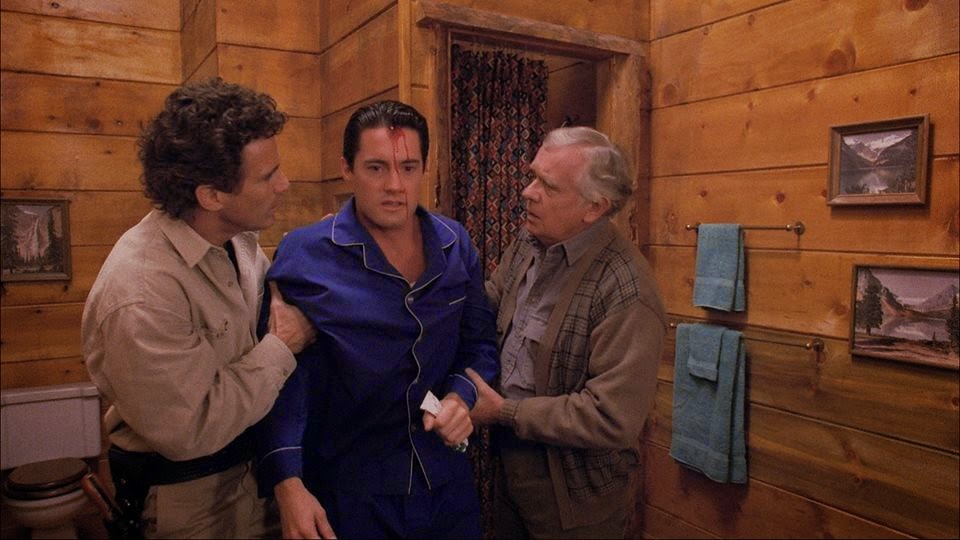 Annie, Cooper, and The Black Lodge
Annie, Cooper, and The Black Lodge
Fire Walk With Me ends on Laura’s death. She’s laughing and crying in the Black Lodge, knowing that, through her suffering and death, she broke the thread of abuse.
The final section of The Missing Pieces shifts the focus away from Laura. The screen pops up with “Some months later” and further emphasizes that, yes, Good Dale is stuck in the lodge and psycho Dale is now in the real world. A few other scenes revealed that Annie has the ring, and is safe from the corruption of Bob or Windom Earle. In the context of Fire Walk With Me, this section feels simultaneously like empty fan service and hinting at the former Season 3 that never existed.
This would have been a terrible way to send home the viewers. My reaction might have been, “You made me sit through all that bullshit so I could have this piece of nonsense?” It would have reduced the power of Laura’s Death, and made Fire Walk With Me be about the series Twin Peaks instead of about Laura Palmer.
Conclusion
By stripping Fire Walk With Me to its current state, David Lynch focused the movie on Laura Palmer and Teresa Banks in the a lens refocuses a laser. The Missing Pieces are, indeed, missing pieces. Most of them deserved to be left out of Laura Palmer’s emotional story because they weren’t her scenes. Except one.
The one scene that relays important information and doesn’t shift focus is a transitional scene. In Fire Walk With Me, Laura Palmer, followed by Donna, goes on one last round of prostitution. They meet the guys at The Bang Bang Bar (aka The Roadhouse), and suddenly they’re in a red room of Rainier beer bottles, cigarette butts, strobe lights, and naked women on a stage. The way the scene is cut, this room is like a back room to The Roadhouse. But, a scene from The Missing Pieces follows the party from The Roadhouse on a crazy driving tour up to a sleazy bar in Canada, where this is a back room. Shifting this scene from an unknown room in The Roadhouse to a random bar in Canada removes the mystery of the scene, but also removes the seedy underbelly implication the movie currently has.
The remainder of the scenes are hit or miss in terms of value and information. Not all of them are devoid of value or content (I’ve listed many of the more important scenes throughout this piece). But, most of them would change the movie for the worse. If you’re looking for more answers to who Philip Jeffries was, or what happened to Annie and Cooper, The Missing Pieces provides no definitive answers. Instead, you’ll have to wait until 2016 for Season 3, like the rest of us.

